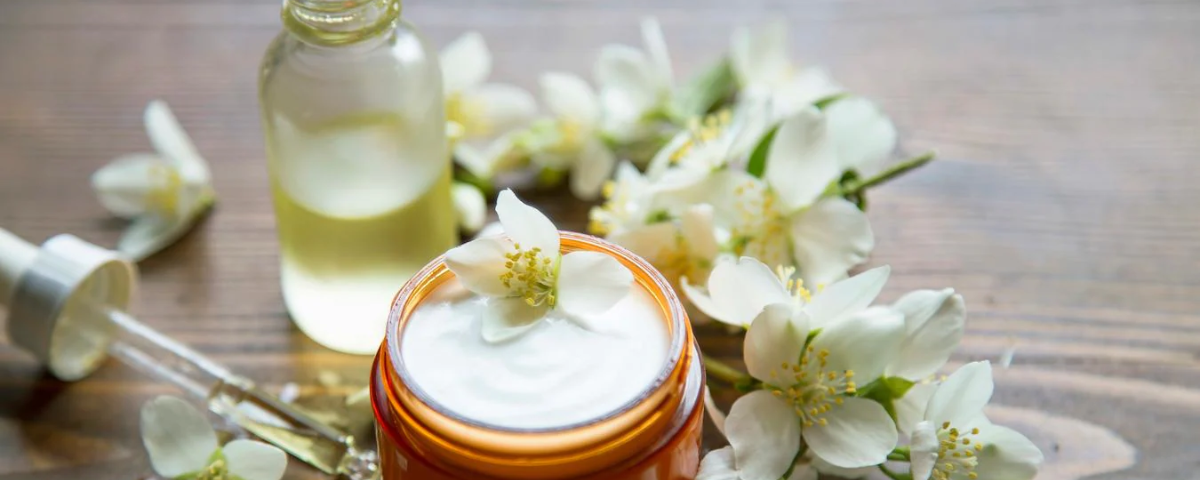I often get asked: what is the difference between pharmaceutical formulation and cosmetic formulation? While the use of therapeutic actives and delivery is often cited as the most obvious variation, the other main distinction is that cosmetic formulas must be much more aesthetically pleasing to consumers than their medicinal counterparts.
When creating pharmaceutical formulas, we need to be concerned foremost with ensuring stable and effective delivery of a medicinal compound; how the product feels or smells is of much lesser importance.
When it comes to formulating cosmetics however, while the product must perform as required by a consumer, it must also provide a pleasing sensory experience to fulfill their expectations and meet often intangible desires.
Let’s look at some formulating tips to ensure your cosmetic formulas deliver on the sensory and aromatic aspects deemed desirable and essential by consumers.
Immediate sensory pleasure can build cosmetic brand loyalty
When a consumer tests a cosmetic product, they will usually apply a small portion to the back of their hand or palm, smell it, then rub it between their fingertips. See additional interesting consumer habits in this video. This can mean the difference between them purchasing a product or choosing to leave it on the shelf.
You can alter the immediate sensory pleasure of a cosmetic product by:
- selecting emulsifiers that have a cushioning feeling without excessive rub in time;
- choosing lipids with volatility or little play time for oily skin types;
- using lipids with a buttery sensory for dry or sensitive skin products;
- combining lipids to create a long spreading emolliency required by body products; and/or
- adding gums that can alter the spread and feel of lipids on contact.
You may also find it useful to add cooling ingredients (such as menthol) or warming ingredients (such as zeolite) in certain cosmetic formulation types for an extra wow factor on application. See more tips on how to formulate for rapid results with this blog. Testing the immediate sensory experience of a product with a target consumer group can be an important aspect to see how well your cosmetic formula appeals to them from the very first introduction.
Lasting sensory appeal can support the activity of the cosmetic formula
The lasting sensory of a product needs to support the performance aspects of the cosmetic formula. In formulation terms, examples include:
- formulas for dry, mature and sensitive skin types need a lingering emolliency on the skin, long after it has been applied;
- cosmetics for hair care should have little to no residue shortly after being applied – volatile lipids can be a great way to achieve this result;
- make up products need to spread well during application but then must not run into fine lines or move throughout the day;
- formulas for oily skin types should remain relatively weightless from application – but usually benefit from the addition of humectants for non-greasy hydration.
Think about the needs of your target consumer: the lasting sensory profile of a cosmetic formula should support these needs to ensure the best results of the product over a prolonged period.
The aroma must appeal to the target market
The aroma of your cosmetic formula can be used to entice a consumer to test its sensory, and can reinforce the message you are trying to convey about the product. The smell of a cosmetic product has such a powerful impact, it can instantly appeal or deter a consumer from purchase! For example, if you are formulating for a:
- sensitive skin market: fragrances and essential oils are often avoided.
- budget market: cheap fragrances with simple aromas are usually the best choice.
- natural market: essential oils or natural fragrances created from essential oil isolates are generally required.
- luxury market: the aromatic profile must be highly specialized to your ideal consumer, whether it be from essential oils or fragrance materials.
When creating cosmetic formulas with essential oils, remember their input is generally too low to be of therapeutic benefit, and their inclusion must not be marketed based on their traditional medicinal uses. Some essential oils can support the performance of active ingredients by balancing the sebum levels of the skin or hair, although their use must be carefully considered if the aromatic profile is not appealing to your target market, despite their benefits.
Aromas can also be used to define a product range, impart an uplifting or relaxing mood, cover undesirable body odours or boost attraction. Learn how to choose aromas to suit your target market, including the use of essential oils, and incorporate them safely into your formulas.
Why sensory and aromatic principles are essential in cosmetic formulas
Consumers have a lot of choice when it comes to personal care. The immediate and long-term sensory aspects of a cosmetic formula, and especially its aroma, can be a make-or-break point when consumers are considering whether to purchase new cosmetic products. Consumers can’t often know just how well a product will work when they are first introduced to it at the shelf – but they can sense whether they like how a product smells and feels almost immediately. Use the tips in this article to ensure the sensory experience suits their preferences and boosts the positive experience of using your brands cosmetic products.
Remember to test the suitability of the sensory and aromatic profiles of your intended product before launching on members of your target market to ensure it hits the right note.
Happy formulating!
Feeling inspired to see ingredients and trends in action?
Then why not visit one of the in-cosmetics events around the world?

